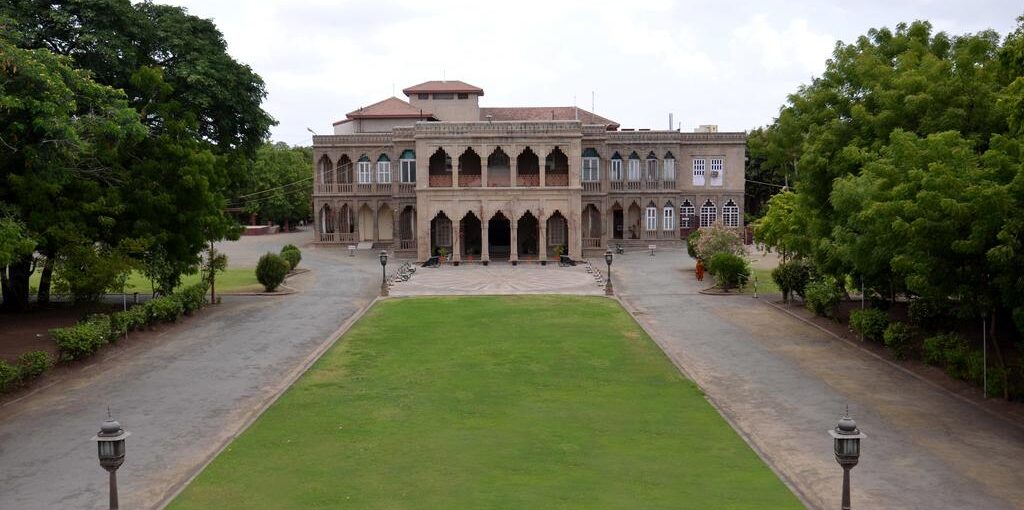The Gohil Dynasty of Bhavnagar, also known as Gohilwad of Bhavnagar, holds a significant place in the history of Gujarat, India. The Gohil Dynasty, which ruled the region for centuries, left behind a rich legacy that continues to shape Bhavnagar’s culture, architecture, and society. Their influence is evident in local traditions, festivals, art, and music. Significant architectural projects, including palaces, temples, and public buildings, reflect the Gohil rulers’ vision and style.
The dynasty’s governance also impacted the social structure and community practices, with lasting effects on society. This blog post delves into the Gohil Dynasty’s historical significance, exploring their crucial role in Bhavnagar’s development and identity.
Origins of the Gohil Dynasty
The Gohil Dynasty of Bhavnagar has a rich and historically significant lineage, the Gohilwad history is deeply rooted in the royalty of Bhavnagar. Its origins can be traced back to the ancient Guhila dynasty of Medapata, also known as the Guhilots of Mewar, as documented by historians like R. Bhandarkar, C. V. Vaidya, and Gaurishankar Oza.

The dynasty’s narrative begins with its founding patriarch, who traces his lineage to the eminent Shalivahana. Historical records, such as the Atpur inscription from 977 CE (VS 1034), mention Shalivahana and provide details of his lineage. The Gohils are also said to belong to the Suryavanshi clan, with their earliest ancestor believed to have been born in a cave in 542 AD following the decline of Vallabhi.
Over the centuries, the Gohils established themselves as steadfast rulers, holding sway over territories in Gujarat. Their strategic military acumen is evident from their migration to Saurashtra in the 12th century, where they ruled independently or as vassals.
The kingdom of Bhavnagar, a testament to the enduring Gohil legacy, was founded by Bhavsinhji Gohil in 1724 AD. Choosing a strategic location near the Gulf of Khambhat, Bhavsinhji Gohil ensured both trade advantages and security. His astute statecraft laid the foundation for the principality of Bhavnagar, embodying the essence of Gohil governance and securing their place in the history of the Gohil Dynasty.
Founding of Bhavnagar
Bhavnagar, founded in 1723 by Maharaja Bhavsinhji I Gohil, holds historical significance as a pivotal city in Gujarat, India. Located strategically along the coastline, Bhavnagar was established to serve as the capital of the princely state under Gohil’s rule. His vision and leadership spurred the city’s growth into a major hub for maritime trade, connecting Gujarat with international markets.
Over time, Bhavnagar became renowned for its bustling port, vibrant cultural exchanges, and thriving economy supported by industries like shipbuilding and textiles. The city’s founding marked the beginning of a legacy of prosperity and cultural richness that continues to shape Bhavnagar’s identity today.
Prominent Figures of the Gohil Dynasty
The Gohil Dynasty and Gohil Dynasty Kings, originating from Saurashtra, Gujarat, are renowned for their influential rulers who profoundly shaped the history of Bhavnagar. Among them, several key figures are notable for their significant contributions.
Bhavsinhji Gohil
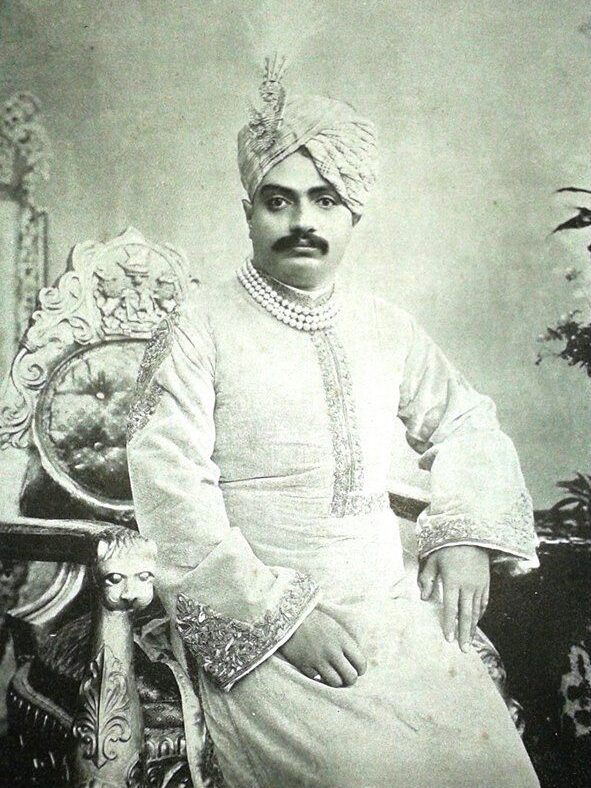
Bhavsinhji I Gohil founded the princely state of Bhavnagar in Gujarat, India. He ruled from 1723 to 1764 and is celebrated for establishing the city of Bhavnagar in 1723. Bhavsinhji I laid the foundation for the state’s administration and development, ensuring stability and growth during its early years. His reign was marked by efforts to strengthen the state’s infrastructure and foster trade, setting a strong precedent for future rulers.
Takhtsinhji Gohil

Following Bhavsinhji, Maharaja Takhtsinhji Gohil is celebrated for his visionary leadership and significant contributions to the development of Bhavnagar. His reign marked a period of substantial infrastructure development, including the expansion of the railways, port facilities, and public buildings. Takhtsinhji’s governance emphasized education, healthcare, and social welfare, improving his subjects’ quality of life.
Bhavsinhji Gohil
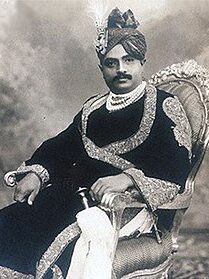
Bhavsinhji II Gohil, ruler of Bhavnagar from 1816 to 1852, was known for his progressive vision and administrative acumen. During his reign, he modernized Bhavnagar by implementing reforms that advanced infrastructure, education, and public welfare. His efforts led to the construction of important public buildings, the establishment of educational institutions, and improvements in agriculture, leaving a lasting legacy that contributed to the prosperity and growth of Bhavnagar.
Krishnakumarsinhji Bhavsinhji Gohil
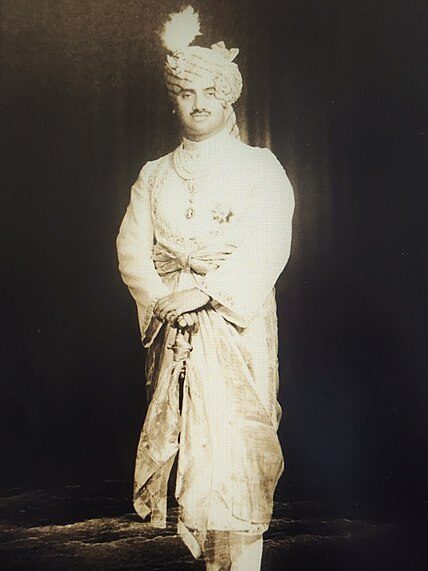
Maharaja Krishna Kumarsinhji Bhavsinhji Gohil was the last ruler of Bhavnagar, reigning from 1919 to 1947. Renowned for his progressive outlook, he focused on modernizing the state and promoting public welfare. He played a pivotal role in Bhavnagar’s integration into independent India, championing social reforms and infrastructure development during a transformative period in Indian history.
The Gohil Dynasty’s Role in Bhavnagar’s Development
- Trade and Commerce Hub: Under the governance of the Gohil Dynasty, Bhavnagar emerged as a vital hub for trade and commerce, significantly contributing to the region’s economic prosperity.
- Industrial Fostering: The dynasty played a pivotal role in fostering industries that became the backbone of Bhavnagar’s economy.
- Shipbuilding Enhancement: Shipbuilding was notably enhanced, capitalizing on the strategic coastal location of the area, which facilitated maritime trade and increased Bhavnagar’s importance on the trade map of India.
- Textile Industry Development: The Gohil rulers invested in the development of the textile industry, tapping into the rich tradition of craftsmanship in the region.
- Diamond-Cutting Sector: They also invested in the burgeoning diamond-cutting sector, which attracted skilled artisans and boosted local employment.
- Economic Growth and Innovation: Their forward-thinking policies not only stimulated economic growth but also elevated Bhavnagar’s status as a center of industrial innovation.
- Educational and Cultural Support: Beyond economic development, the Gohils were instrumental in promoting educational initiatives and supporting the arts, laying the groundwork for a society that values knowledge and cultural expression.
- Foundations for Prosperity: This multifaceted approach to development under the Gohil Dynasty laid the foundations for a prosperous, well-rounded society in Bhavnagar, intertwining economic advancement with cultural enrichment.
Architectural Marvels from the Gohil Era
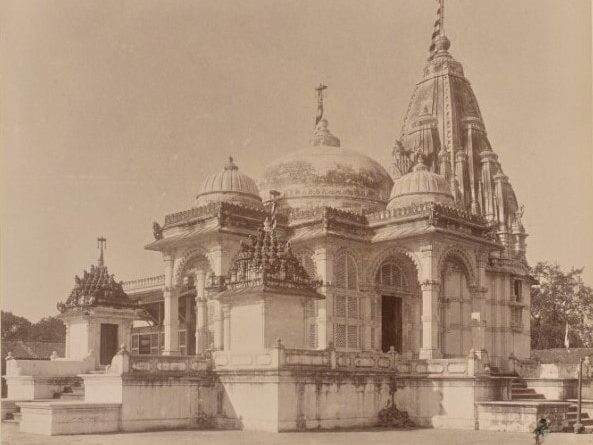
The architectural legacy of the Gohil Dynasty of Bhavnagar stands as a striking reflection of the grandeur, sophistication, and artistic sensibilities of their era. Some of these remarkable edifices include the Nilambagh Palace, the Takhteshwar Temple, and the Bhavnagar Fort.
- Darbar Gadh (Darbargadh): Constructed as the main palace and administrative center of the Bhavnagar princely state during the rule of Maharaja Takhtsinhji in the late 19th century, Darbar Gadh exemplifies the grandeur and strategic planning of the Gohil dynasty. It was designed to serve as both a royal residence and a seat of governance, showcasing a blend of Indian and European architectural influences. The palace features ornate facades, intricate carvings, and spacious courtyards that once hosted elaborate court ceremonies and the royal family. Today, Darbar Gadh stands as a significant Gohil heritage site, offering visitors a glimpse into Bhavnagar’s regal past and the opulence of its rulers.
- Nilambagh Palace: Constructed during the reign of Maharaja Takhtsinhji in the late 19th century, Nilambagh Palace stands as a testament to the Gohil dynasty’s refined taste and architectural patronage. It was designed to reflect a fusion of traditional Indian and European styles, showcasing ornate interiors and sprawling gardens that once served as a royal residence for the royal family. Today, it has been meticulously restored and transformed into a heritage hotel, preserving its historical charm while offering modern comforts to guests.
- Takhteshwar Temple: Built atop a hill overlooking Bhavnagar by Maharaja Takhtsinhji in the late 19th century, the Takhteshwar Temple is a symbol of religious devotion and architectural finesse. Its construction exemplifies the intricate craftsmanship of the Gohil era, featuring intricate carvings and a commanding presence. The temple not only serves as a place of worship but also provides panoramic views of Bhavnagar, making it a popular tourist attraction and a cultural landmark of the city.
- Bhavnagar Fort: Strategically located near the Gulf of Khambhat, the Bhavnagar Fort was built during the reign of Maharaja Bhavsinhji II Gohil in the 18th century. Its robust walls and strategic positioning underscore the dynasty’s military prowess and foresight in defending the princely state against external threats. The fort served as a crucial bastion of defense and governance, housing administrative offices, royal residences, and granaries. Today, while parts of the fort have weathered the passage of time, it remains a significant historical site, offering insights into Bhavnagar’s rich heritage and the Gohil dynasty’s rule.
These edifices not only contribute to the city’s architectural landscape but also encapsulate the cultural ethos and technological advancements of their time. Each structure built during the Gohil reign embodies the dynasty’s commitment to aesthetic refinement, spiritual reverence, and societal security, ensuring their architectural legacy continues to awe and inspire generations.
The Gohil Dynasty’s Cultural and Social Impact
The profound influence of the Gohil Dynasty of Bhavnagar extended beyond economic and architectural development, deeply embedding itself into the cultural and social fabric of Bhavnagar. Through their patronage of the arts, the Gohil rulers facilitated a flourishing environment for creativity and innovation.
Local artists, musicians, and poets found not just support but also encouragement under their rule, leading to a renaissance of cultural expression that enriched the region’s heritage. This era saw the creation of enduring works of art, music, and literature that continue to be celebrated for their beauty and historical significance.
Furthermore, the dynasty’s commitment to fostering religious tolerance and social harmony was instrumental in creating a diverse yet cohesive community. By promoting principles of unity and respect among the various religious and ethnic groups within their territory, they laid the foundation for a society characterized by mutual understanding and peaceful coexistence.
This inclusivity ethos strengthened Bhavnagar’s social fabric and set a precedent for future generations, instilling values that remain intrinsic to the region’s identity. The cultural initiatives and social policies of the Gohil Dynasty of Bhavnagar have left an indelible mark on Bhavnagar, shaping its cultural landscape and influencing its social dynamics. Their legacy in these areas is a testament to their enlightened approach to governance and their deep connection to the people and culture of their land.
The Legacy of the Gohil Dynasty Today
The Gohil Dynasty’s enduring influence is unmistakable in Bhavnagar’s contemporary fabric. The physical and cultural landscapes of the city are imbued with their legacy, from majestic architectural landmarks to enduring traditions and festivals that continue to animate the city’s life. While the direct rule of the Gohils may have ceased, their historical impact persists, shaping the identity and values of Bhavnagar’s communities.
Present-day celebrations and public commemorations often reflect the dynasty’s historical significance, blending reverence for the past with the vibrancy of modern life. Additionally, the current generation of the Gohil lineage, respected for their forebears’ contributions, remains engaged in social and cultural initiatives, ensuring that the legacy of their ancestors remains relevant and vibrant. This living Gohil heritage of Bhavnagar, a blend of history and ongoing contribution, ensures that the legacy of the Gohil Dynasty of Bhavnagar is not merely a chapter in history books but a continuing influence on the growth and character of Bhavnagar.

Dhiraj Patel is from Bhavnagar and he loves his city a lot, He’s an expert on its past and loves sharing tales about it. Dhiraj writes for bhavnagar.city, where he talks about the city’s culture and history. He’s great at it, drawing people in with his fascinating stories. His passion and knowledge make Bhavnagar come alive for readers, showing off its unique beauty and history.

 Hospitals
Hospitals Companies
Companies